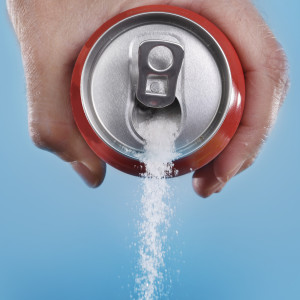Earlier this year, the District of Columbia Council attempted to pass a tax of $0.15 per ounce on sodas and other drinks with high sugar content. Despite a belief that the tax would “discourage residents from buying sugary drinks” and choosing healthier alternatives, early evidence suggests a tax would do little to curb consumer habits despite the lofty public health ambitions.
The broader public health objective of D.C.’s soda tax was to cut rates of obesity and diabetes, particularly among residents in low-income neighborhoods that experience higher rates and more affluent zip codes. While soda tax advocates may have believed increasing costs would curb consumption, its failure was entirely predictable. As a result, residents of the District are left with a regressive tax that forces them to pay more for goods and are left with less disposable income.
In simple terms, D.C.’s proposed soda tax would harm consumers by making soft drinks more expensive while providing few health benefits.
A recent study from the Center for Science in the Public Interest (CSPI) has provided early evidence that the soda tax has done little to dent consumer demand. CSPI’s recent study found that “sugary drinks were placed in anywhere from eight to 59 different locations per store.” While this evidence only shows that stores are still stocking sugary drinks, it can be inferred that consumer demand has not been altered, given convenience stores’ sensitivity to demand.
If other studies replicate CSPI’s findings, it will be apparent that the soda tax will achieve nothing more than making soft drinks more expensive and unnecessarily straining incomes, particularly for low-income Americans who consume sugary beverages at higher rates than more affluent Americans.
While soda tax advocates may have had altruistic intentions, many empirical studies have shown that levying taxes does little to adjust consumer demand or improve public health. For example, a global study conducted by the New Zealand Institute of Economic Research (NZIER) in 2017 was unable to find any “evidence that any sugar tax actually implemented anywhere in the world has led to improvements in health.”
NZIER’s findings were later backed up by McKinsey, who found that increased taxes on sodas and high sugar drinks was an ineffective way to cut obesity and diabetes. McKinsey’s studies suggested that a tax of 10 percent would only save about 500 lives per year. Better educating people about correct portion control, on the other hand, could save over 2,000 lives every year.
Perhaps policymakers and lawmakers should be focusing their efforts on educating the public rather than levying ineffective taxes on consumers that cut their spending power. Lawmakers in the District could have found real-world evidence about the soda taxes failure had they just looked to Philadelphia and their failure to cut consumption of sugary drinks.
In 2017, Philadelphia introduced a 1.5 cents per ounce tax on sugary and artificially sweetened beverages. While the tax did lead to a significant decline in sales, estimated at around 38.9 percent. The decline in sales was caused by individuals shopping outside the city, which had knock-on effects on the wider economy. As the American Consumer Institute previously pointed out, Philadelphia’s soda tax “ cost the city 1,192 jobs, reduced economic output by nearly $80 million, and deprived workers of $55 million in labor income.”
A study from Drexel University found the tax did little to alter consumption habits. “had minimal to no influence on what Philadelphians are drinking,” with Philadelphians only consuming “three fewer sugary beverages” each month. The result of Drexel’s study reflected previous studies that found when Mexico introduced a tax on high-sugar drinks, it only cut consumption by seven calories per day.
In addition to failing to cut consumption meaningfully, Philadelphia’s sugary drinks tax also failed to generate the promised revenues. Between January and June 2017, the city’s Department of Revenue projected that the tax would raise over $46 million. However, the tax only raised $39 million, a shortfall of $6 million. The significant shortfall meant that promised investments in education never materialized.
Residents of Philadelphia are already revolting against the tax. In February 2020, The Philadelphia Inquirer found that 62 percent of residents thought the tax was a failure, and 55 percent wanted it repealed.
While D.C.’s soda tax has yet to pass, the proposal would fail to cut sales and it would not improve public health. Nevertheless, proposals like these are entirely predictable based on the empirical evidence from global studies and the experience of Philadelphia. Therefore, D.C. should forget about the sugary drinks tax and begin investing in proven programs to cut diabetes and obesity.

